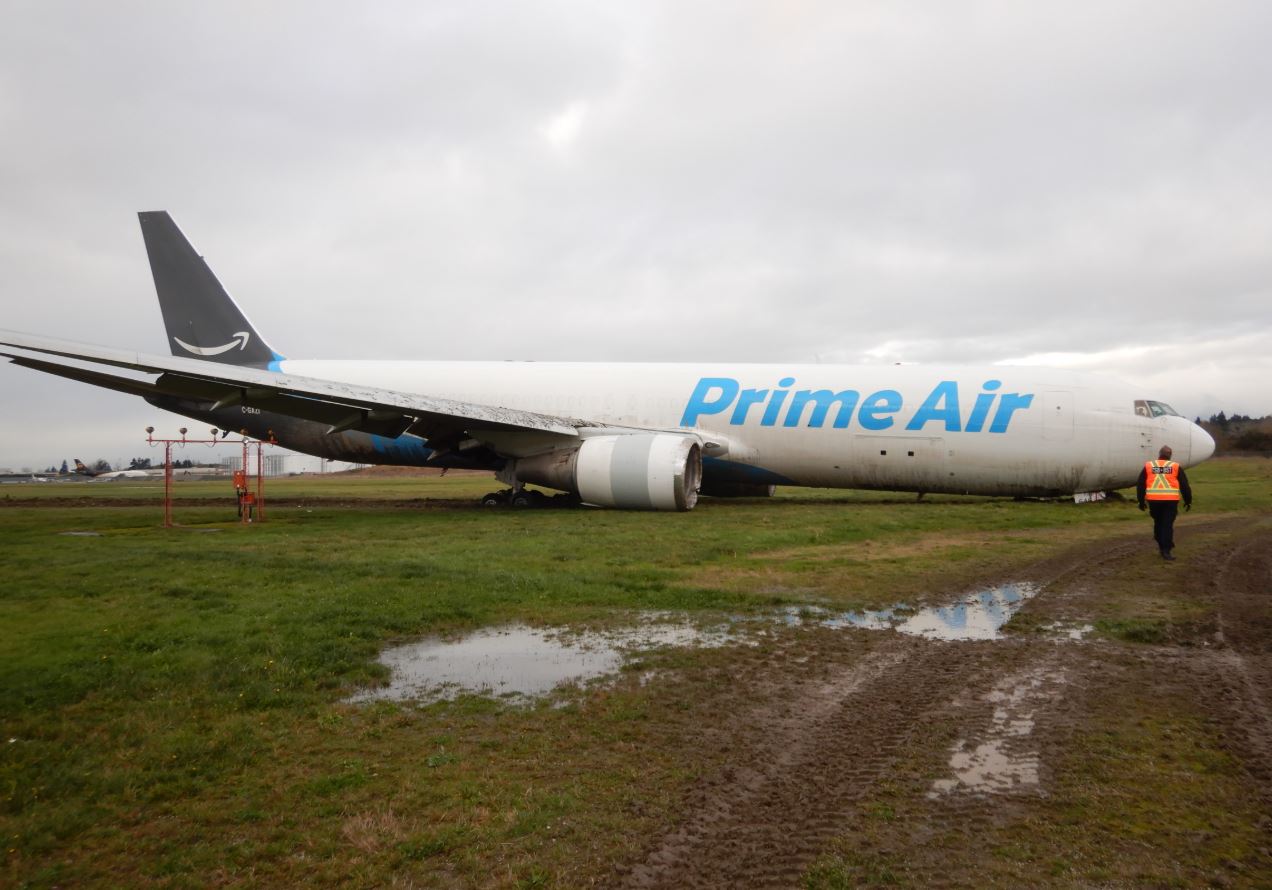Runway overrun
Cargojet Airways Limited
Boeing 767-338, C-GAZI
Vancouver International Airport (CYVR), British Columbia
The occurrence
On 19 November 2024, a Boeing 767-338 aircraft, operated by Cargojet Airways Limited, departed John C. Munro Hamilton International Airport (CYHM), Ontario, on a flight to Vancouver International Airport (CYVR), British Columbia, with 2 pilots and a jump seater on board.
During the descent, the crew observed an asymmetry flap warning, which prompted them to level off, notify air traffic control and declare a PAN PAN. The crew then completed the relevant checklist and prepared for a faster than normal approach and landing speed due to the slat problem. On touchdown, the brakes were applied, and the thrust reverse handles were pulled, but neither engaged.
The aircraft overran the end of Runway 08L at approximately 120 knots, striking numerous approach lights. It then sank into the muddy ground and came to rest approximately 1250 feet beyond the paved surface. After declaring a MAYDAY and completing the shutdown checklist, the crew and jump seater exited with the assistance of Air Rescue and Firefighting personnel.
The aircraft was significantly damaged and recovered 2 days later. The TSB is investigating.
Media materials
Investigation information
Download high-resolution photos from the TSB Flickr page.
Class of investigation
This is a class 3 investigation. These investigations analyze a small number of safety issues, and may result in recommendations. Class 3 investigations are generally completed within 450 days. For more information, see the Policy on Occurrence Classification.
TSB investigation process
There are 3 phases to a TSB investigation
- Field phase: a team of investigators examines the occurrence site and wreckage, interviews witnesses and collects pertinent information.
- Examination and analysis phase: the TSB reviews pertinent records, tests components of the wreckage in the lab, determines the sequence of events and identifies safety deficiencies. When safety deficiencies are suspected or confirmed, the TSB advises the appropriate authority without waiting until publication of the final report.
- Report phase: a confidential draft report is approved by the Board and sent to persons and corporations who are directly concerned by the report. They then have the opportunity to dispute or correct information they believe to be incorrect. The Board considers all representations before approving the final report, which is subsequently released to the public.
For more information, see our Investigation process page.
The TSB is an independent agency that investigates air, marine, pipeline, and rail transportation occurrences. Its sole aim is the advancement of transportation safety. It is not the function of the Board to assign fault or determine civil or criminal liability.
